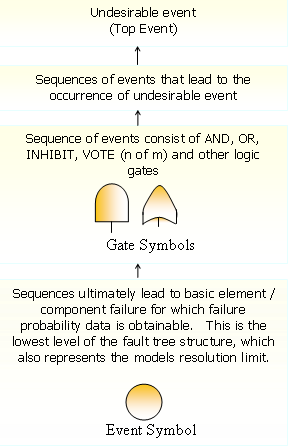| |
 |
|
Delivering Advanced Engineering Solutions |
|
|
|
|
|
|
|
|
AESC is a leading provider of fault tree models for complex systems. We apply fault tree methodology and analysis technique as a decomposition tool, to isolate failure paths and failure probability of a system. Our staff has developed fault tree models for variety of industries including Medical Devices Manufacturers under FDA guidelines, DoD, NAWC, Aerospace, communication and utilities.
Fault tree modeling is a structured technique that breaks down a complex problem into its simpler elements. An undesired system failure such as a safety system failure is selected for the top event. The top event is related to more basic failure events by logic gates and or more basic events. The process is continued, until the events can no longer be expanded. Failure probabilities are assigned at the simplest elements of the model, and the model will compute the system level failure probabilities based on the interrelationship as constructed by the logic gates.
Basic advantage of fault tree modeling versus other modeling techniques like FMEA is that the analysis is focused on identification of causes that lead to a specific undesirable top event.
|

|
Fault tree analysis results include top event failure probability and associated uncertainty, minimal cut sets, and importance analysis. Top event failure probability is further utilized in the overall risk assessment as an input to the event tree analysis. Minimal cut sets contain all the unique combination of events that lead to occurrence of the top event. This result is utilized in identification of system weaknesses, and possible elimination of high probability combination. Importance analyses are algorithms that prioritize single rudimentary events with respect to their impact on the top event, or system failure. These results are used to formulate recommendations for improvements and or corrective actions.
|
|
|
|
|
|
|
|